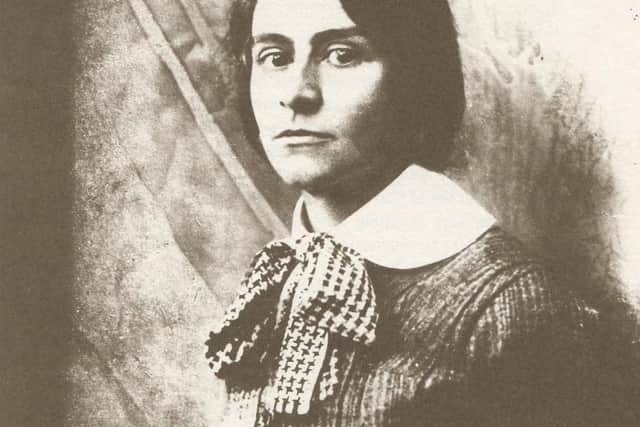Google Doodle: why acclaimed German poet and artist Else Lasker-Schüler is being honoured


It lands on the 83rd anniversary of her famous poem “Mein blaues Klavier” (“My Blue Piano”) being published in a Swiss newspaper, and also comes just a few days before the 151st anniversary of her birth.
Lasker-Schüler is widely considered one of the greatest lyricists to write in the German language - and one of the few women affiliated with the Expressionist movement.
But just who was she?


Here is everything you need to know:
Who was Else Lasker-Schüler?
Advertisement
Hide AdAdvertisement
Hide AdLasker-Schüler was born in Elberfeld in western German on 11 February 1869 as Elisabeth Schüler, and was raised in a prominent Jewish family.
Schüler was encouraged to experiment and explore her artistic interests by her mother, who home schooled her; she soon began developing her voice as a poet.
She married Jonathan Lasker in 1894 and the couple moved to Berlin.
It was in the capital where Lasker-Schüler began publishing her first poems, becoming a well-known fixture in Berlin’s artistic circles and rubbing shoulders with some of the city’s top literary figures.
As World War II approached, Lasker-Schüler was forced to flee the persecution in her home country - now Nazi-controlled - and eventually settled in Jerusalem.
Just as famous for her eccentric personality and bohemian lifestyle, Lasker-Schüler could often be found dressed in flamboyant robes and taking on her alter ego “Jusuf, Prince of Thebes,” just one of her vibrant character creations.
She published multiple works from within her exile, many under the "Jusuf" alter ego, and tended to spend whatever money she had all at once, which made her go for days without food or shelter.
Lasker-Schüler poetry was prolific throughout her life, and she established herself as a leading German Expressionist voice, and featuring heavily in famous Berlin literary journal Der Sturm (“The Storm”).
Advertisement
Hide AdAdvertisement
Hide AdHer verse frequently explored themes of fantasy, loneliness, romance, and religion. In 1932 Lasker-Schüler received the Kleist Prize, widely considered the highest German literary honour at the time.
In late-1944 Lasker-Schüler's health deteriorated. She suffered a heart attack on 16 January 16, and died in Jerusalem on 22 January 1945.
In 2007, her final days in Jerusalem were commemorated in the BBC Radio 4 play My Blue Piano by the Scottish playwright Marty Ross, which combined the facts of her dying days with the fantasies of her inner life.
My Blue Piano in full:
Back home I have a blue piano Yet I can’t play a single note.
It’s been standing in the shadow of the cellar door Since the world became savage.
Four star-hands played it before – The moon lady sang in the boat – Now the rats dance to the clattering.
The keyboard’s smashed to pieces. I weep for the blue deceased.
Oh dear angels, open up for me – I’ve eaten from the bitter bread – The gate to heaven while I’m still living – Even though it’s forbidden.
What does the Doodle depict?
Advertisement
Hide AdAdvertisement
Hide AdIt was on this day in 1937 that a Swiss newspaper published her famous poem “Mein blaues Klavier” (“My Blue Piano”).
The poem itself is referenced in Google's Doodle artwork, by the piano keys depicted on the camel’s back, alongside other symbols of Lasker-Schüler’s life and work.
The Doodle was designed by Frankfurt-based artist Cynthia Kittler.
This article originally appeared on iNews